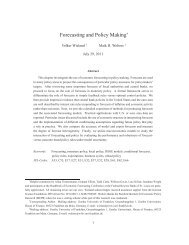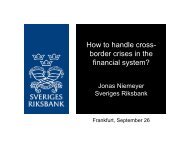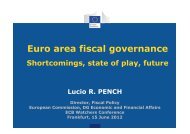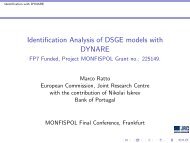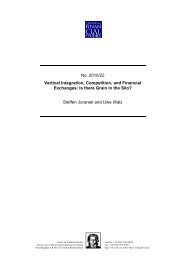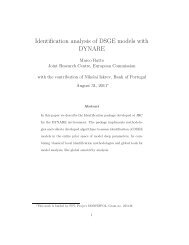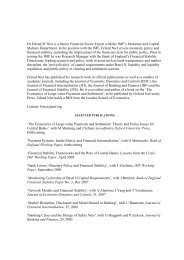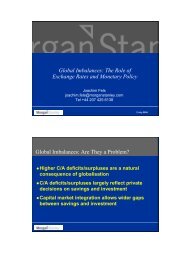r. david mclean, jeffrey pontiff and akiko watanabe - Center for ...
r. david mclean, jeffrey pontiff and akiko watanabe - Center for ...
r. david mclean, jeffrey pontiff and akiko watanabe - Center for ...
Create successful ePaper yourself
Turn your PDF publications into a flip-book with our unique Google optimized e-Paper software.
international markets than in the U.S., it is doubtful that share issuance proxies <strong>for</strong> a risk<br />
factor in the same vein as book-to-market <strong>and</strong> size in the U.S. Share issuance may still reflect<br />
rational asset pricing, although its contribution to expected returns is likely to be through a<br />
non-risk based avenue, such as providing compensation <strong>for</strong> taxes or transaction costs.<br />
The relation between book-to-market <strong>and</strong> issuance runs counter to market-timing<br />
literature that uses book-to-market as a proxy <strong>for</strong> mispricing (Lakonishok, Shleifer, <strong>and</strong><br />
Vishny (1994)). Counter to this literature, Table 2 shows that high book-to-market firms<br />
tend to issue more stock.<br />
We find that firms are more likely to issue shares after having had high past returns,<br />
<strong>and</strong> that this result is stronger <strong>for</strong> small firms. This finding is consistent with both the U.S.<br />
evidence <strong>and</strong> with market timing theories. However, high past returns could be the result of<br />
improved investment opportunities, <strong>and</strong> smaller firms may be more dependent on equity<br />
financing than large firms. There<strong>for</strong>e, capital raising <strong>for</strong> legitimate investment opportunities<br />
could also explain the observed relation between past returns <strong>and</strong> share issuance.<br />
3. Effects of Positive <strong>and</strong> Negative Share Issuances<br />
Previous studies have investigated long-run returns following specific events that<br />
affect shares outst<strong>and</strong>ing, such as seasoned-equity offerings (Loughran <strong>and</strong> Ritter (1995))<br />
<strong>and</strong> stock-financed mergers (Loughran <strong>and</strong> Vigh (1997)). Fama <strong>and</strong> French (2007) compare<br />
issuance-return predictability based on the whether the firm is an issuer or repurchaser, <strong>and</strong><br />
the magnitude of the respective activity. Motivated by the results in these studies, we test<br />
whether positive <strong>and</strong> negative issuances can separately predict returns across non-U.S. firms.<br />
Our investigation varies from the repurchase literature in that our issuance variable measures<br />
13



